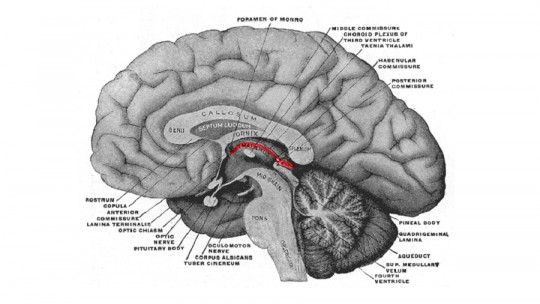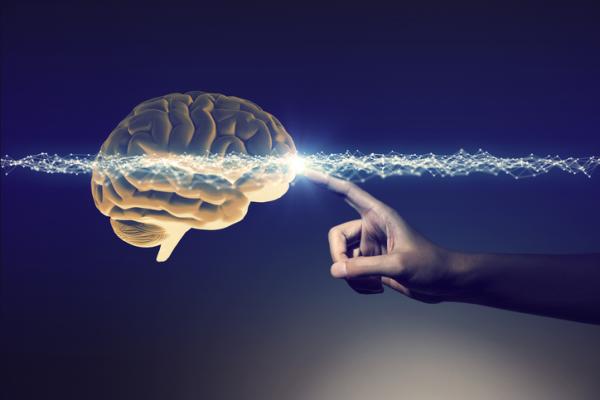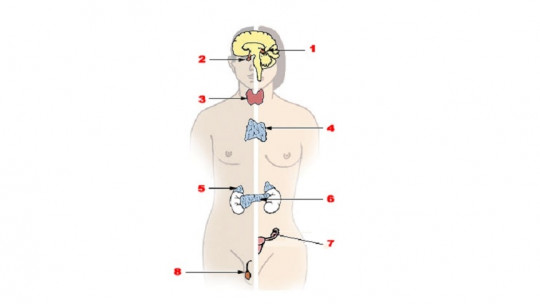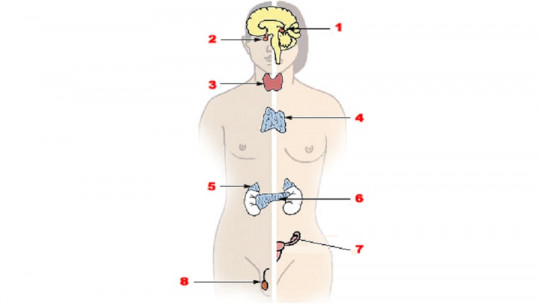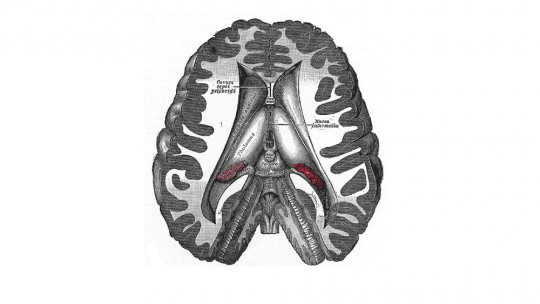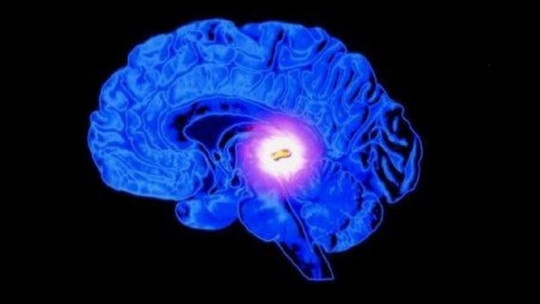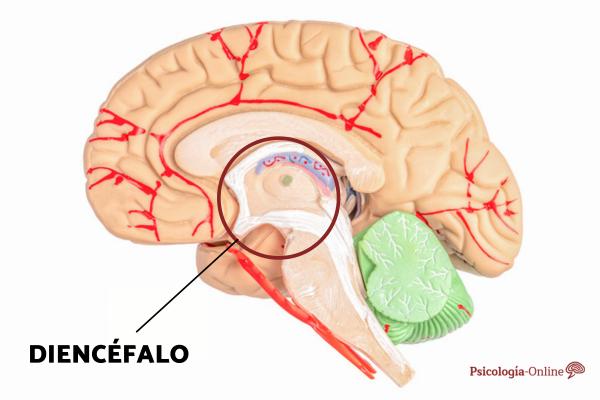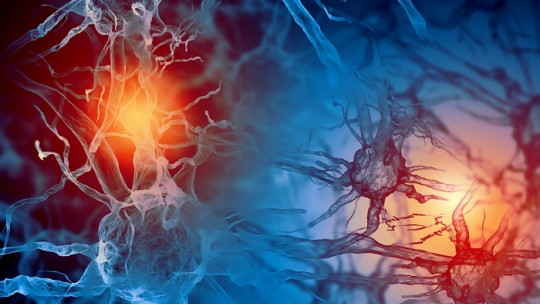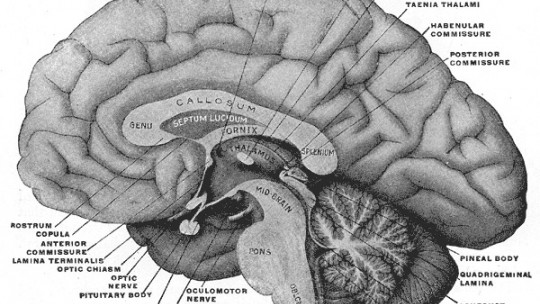
Within the brain there are numerous structures with very diverse functions, which connect with a large number of body systems. Although we can generally consider that the nervous system has an effect on the rest of the body systems, some of the structures that are part of it are also considered part of other body systems.
This is the case of the pineal gland or epiphysis which in addition to being part of the nervous system is an important part of the endocrine system.
Pineal gland or epiphysis
Considered by René Descartes as the place where animal spirits lived that governed processes such as sensitivity, imagination, impulsivity or emotion, the nerve center where the human soul lived, The pineal gland has been studied for many centuries
The first records of the study of this structure date back to the 3rd century BC, in which it was proposed that it regulated the flow of thoughts. It would later be analyzed by Galen, Descartes and many other thinkers and professionals from various fields. The study of the pineal gland advanced and deepened especially from the 20th century onwards, in which their functions began to be studied scientifically based on the study of cases of patients with tumors in this area.
Today, we know that the pineal gland or epiphysis It is a structure located in the dorsomedial part of the diencephalon, between the superior colliculi and above the third cerebral ventricle It is an endocrine regulation center that participates in a multitude of different processes fundamental to the development of the organism, sending different hormones into the blood circuit.
With a shape similar to that of a pine cone (a similarity from which its name derives), the pineal gland has interesting properties, since It has been shown to be photosensitive, reacting to the level of ambient lighting Likewise, it appears to be affected by external chemicals and even electromagnetic waves.
Irrigation and innervation
The pineal gland is strongly supplied with blood, at a level similar to that of the kidneys. It is a structure that actively participates in the secretion of various hormones, the main one being melatonin but also influencing the emission of follicle-stimulating and luteinizing hormones. These hormones subsequently reach the blood, which takes them to their target organs.
Regarding the nervous connections of the pineal gland, it is innervated by the autonomic nervous system, both by the sympathetic and parasympathetic branches. At the sympathetic level, its main nervous connection is the superior cervical ganglion. Regarding the ganglia that innervate it at a parasympathetic level, we can find the otic and pterygopalatine ganglia.
Main functions: what do you participate in?
The pineal gland is a relevant structure linked to various situations. Forming part of both the nervous system and the endocrine system, its basic functioning is the emission of various hormones that will alter different brain nuclei and other body systems.
Specifically, we can establish that some of The main functions of this structure are the following
1. Regulation of biorhythms
The pineal gland is the part of the brain that, in reaction to the amount of light present in the environment, is responsible for secreting melatonin. Synthesized from serotonin, this hormone is involved in the regulation of circadian and infradian rhythms, so that, being the main secreter of melatonin, the epiphysis has a primary function in regulating the sleep-wake cycle.
When visual information from the optic nerve reaches the epiphysis (having passed through the suprachiasmatic nucleus) superior cervical ganglion, it indicates that the ambient lighting is low or non-existent, the pineal gland proceeds to secrete the hormone known as melatonin, which will later be sent to different brain regions. In the presence of lighting, however, melatonin production is inhibited.
2. Development and maturation
Some of the medical cases that in modern times have stimulated research into the epiphysis or pineal gland reflected a fact that has subsequently been confirmed experimentally: the epiphysis has a great relevance when establishing the onset of puberty In these cases, adolescents with tumors in this gland showed precocious puberty. Later research has put this fact in relation to the production of melatonin in this structure.
During the first years of life the pineal gland is strongly activated, with melatonin production declining around the ages of eight to twelve, when the first physiological changes begin to take place that will culminate with the transition from child to adult. Thus, through various investigations Pineal gland activity has been shown to delay puberty, starting this stage of life when it is less active. In other words, another of the main functions of the pineal gland is to regulate the entry into sexual maturity.
3. Sexual behavior
The pineal gland actively participates in secretion of various hormones, including some of those that govern the menstrual cycle in women, specifically the luteinizing and follicle-stimulating hormones.
In addition to this, by regulating biological rhythms through melatonin, the epiphysis also influences seasonal sexual behavior in other animal species. The pineal gland interacts with other structures linked to sexuality such as the septal nuclei, to guarantee correct functioning in this activity that is so important from the point of view of evolution.
4. Emotion and happiness
The participation of the epiphysis or pineal gland in the emotional sphere has great relevance. In addition to other hormones that affect mood, the pineal gland participates in the generation of endorphins, hormones that They cause states of happiness and allow pain to be regulated In fact, its involvement in the limbic system makes it a fundamental component of emotional processes, which depend on the interaction between the brain and the organs distributed throughout the body that secrete hormones.
5. Pigmentation
Although it may not seem as relevant as the previous ones, melanin secreted by the pineal gland It participates in skin pigmentation, giving a slightly dark tone in multiple species. This function is secondary, and in fact there are genetic variants in humans in which melanin barely has an effect on the way skin tone changes. On the other hand, in cases of albinism this function disappears, with all the biological and social problems that this entails.
6. Participation in other aspects
Apart from its participation in the aforementioned, the pineal gland participates in other processes. For example, it has been shown that It has to do with the regulation of body temperature Likewise, the hormones it generates also have an effect on aspects such as attention, concentration, memory and other higher mental functions It must be taken into account that practically any brain structure linked to hormone secretion has an effect on cognition, and the pineal gland is no exception.

